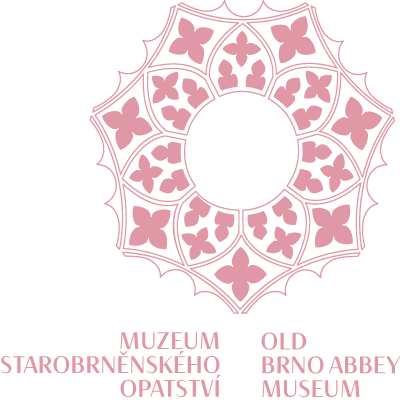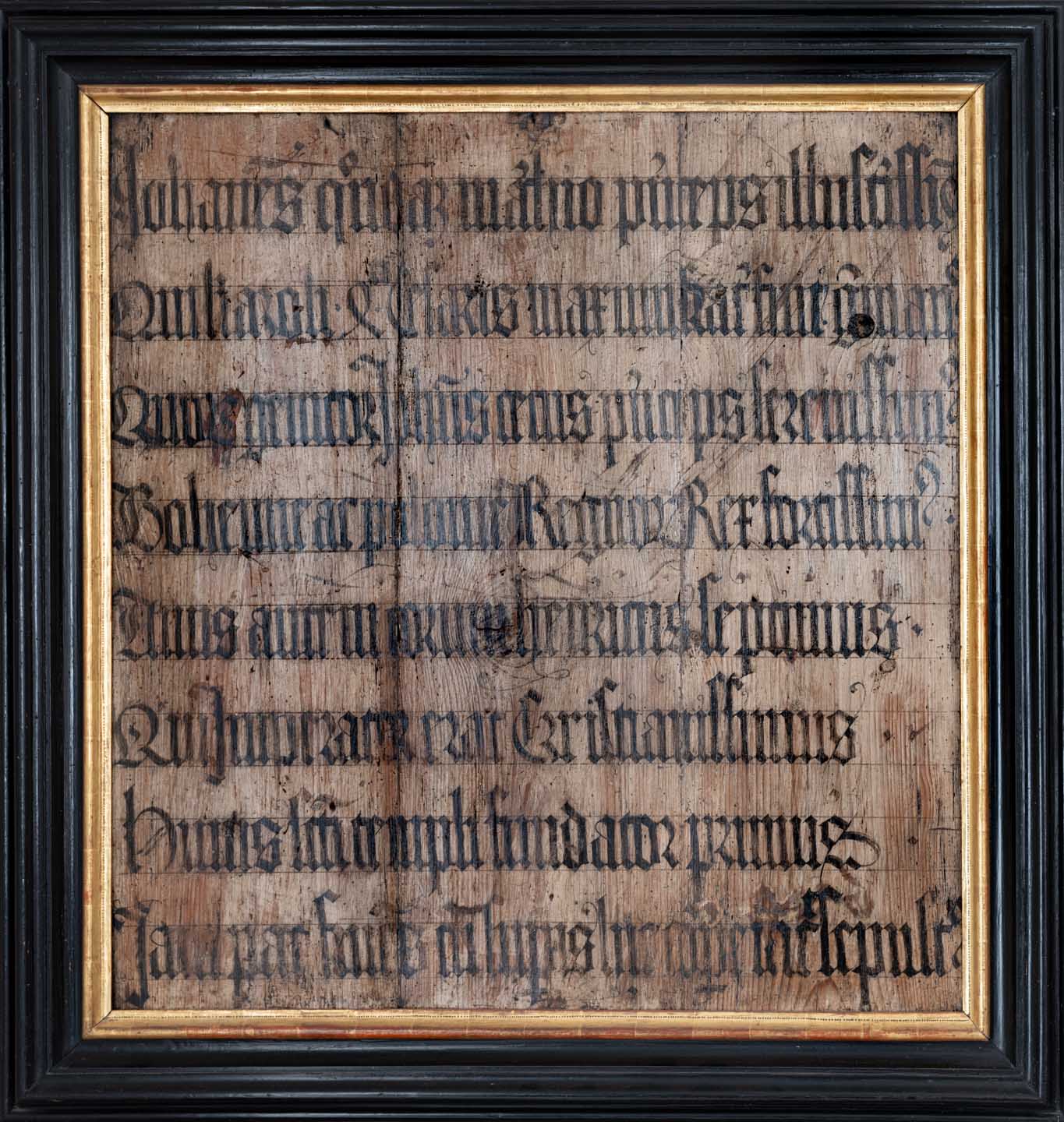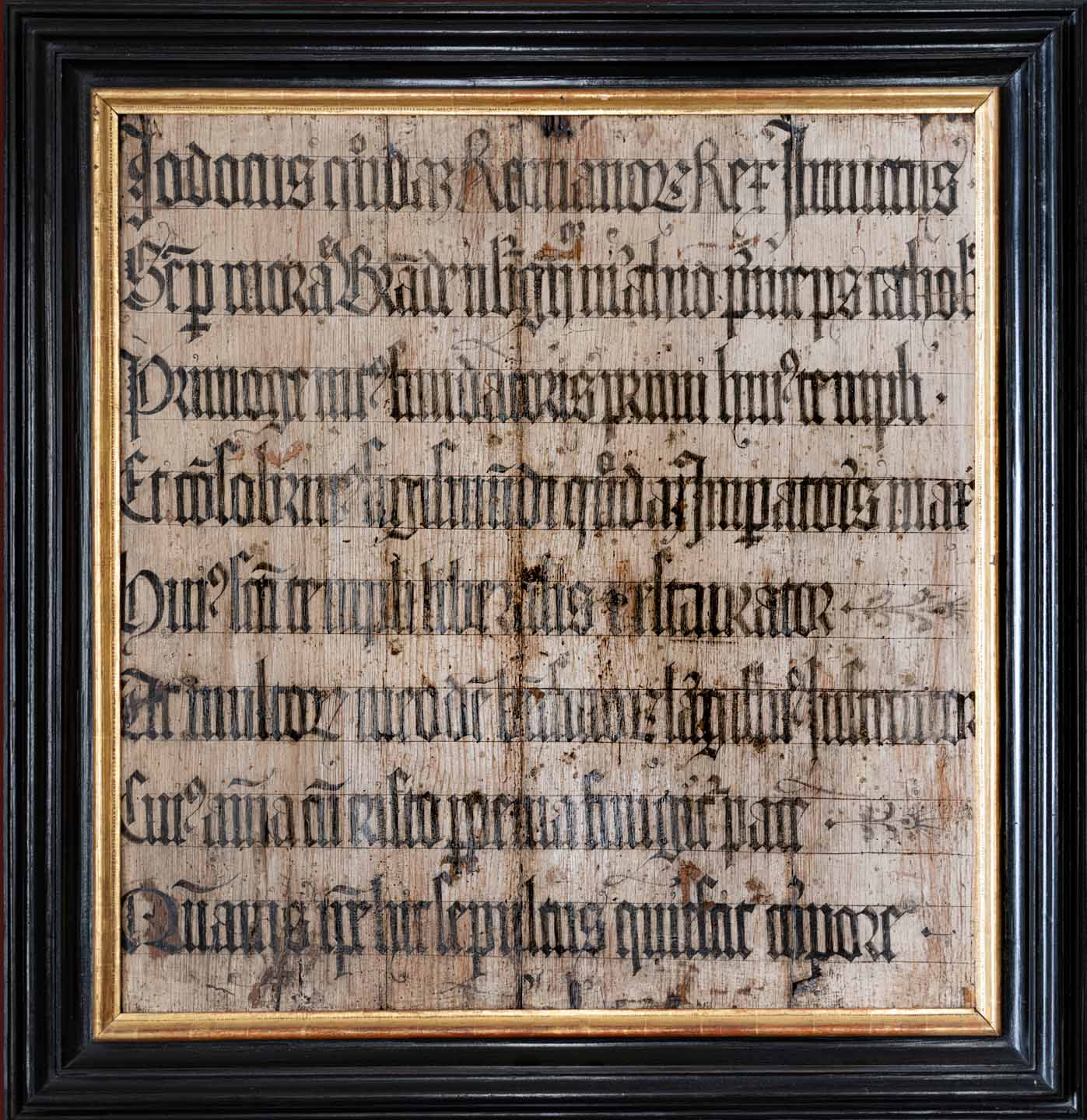Funeral plaque of Margrave Jan Henry
Brno? | 18 January 1418 | Wood, polychrome
Inscription:
Joannes quondam marchio princeps illustrissimus qui Caroli IV., caesaris maximi frater fuit germanus quorum genitor Joannes cecus princeps serenissimus Bohemiae ac Poleniae regnorum rex fortissimus avus autem corum Henricus septimus, qui imperator erat C/h/ristianissimus huius sancti templi fundator primus iam pax fruitur cum supernis hic corpore iacet sepultus.
The tablet reads in translation as follows:
John, once a noble reigning margrave, who was the own brother of the great Emperor Charles IV, whose father was the most illustrious ruler and valiant king of the kingdoms of Bohemia and Poland, John the Blind, and whose grandfather was the most Christian Emperor Henry VII, the first founder of this shrine already enjoys peace with the celestials, here lies buried his body.
John Henry of Luxembourg (1322-1375), the younger brother of Charles IV, was born from the union of John of Luxembourg with Eliška Premyslovna. At the age of only five, he was sent to Tyrol, where he was brought up and educated. In 1330, he became the husband of Henry of Carinthia’s daughter, which was to bring the Luxemburgs dominion over Tyrol. However, the marriage did not fulfil its purpose. The marriage of John Henry and Margaret Maultasch was dissolved due to alleged impotence. After his separation from Margaret, John Henry married three more times and conceived legitimate and illegitimate offspring, namely six legitimate children and one illegitimate son, John (later Bishop of Litomyšl and Patriarch of Aquileia). Margaret subsequently married the son of Emperor Ludwig Bavor, Margrave of Brandenburg, and thus regained her claim to Tyrol, which she had lost in 1335. Political and power efforts to return the Tyrol to the Prince of Luxembourg were futile, however much King Charles IV of Rome advocated it. In 1349, Charles IV granted the Moravian Margraviate as a fief to Jan Henry on the condition that as long as Charles’s descendants were alive, he or his children would not claim the Bohemian throne. The icon of the Madonna of St. Thomas is intrinsically linked to the monastery, which was to be dedicated to the Augustinian community in 1356 by the Roman Emperor Charles IV.
Funeral plaque of Margrave Jost
Inscription:
Iodocus quondam Romanorum rex. invictus semper Moraviae et Brandenburgensis marchio princeps catholicus primogenitus fundatoris primi huius templi et consobrinus Sigismundi quondam imperatoris maximi huis sancti templi liberalis restaurator ac multorum in eodem beneficiorum largissimus/? /institutor, cuius anima cum/C/risto perpetua fungitur pace quam vis ipse hic sepultus quiescit corpore.
The tablet reads in translation as follows:
Jošt, once unconquered King of Rome, always Catholic Margrave of Moravia and Brandenburg, first-born son of the first founder of this temple and cousin of the once great Emperor Sigismund, magnanimous restorer of this shrine and generous originator of many good things in it; his soul enjoys eternal peace with Christ while his body rests here.
Jošt Lucemburský (1354? – 1411) was born as the first-born son of Margrave Jan Henry. He influenced the politics of the lands of the Bohemian Crown as Margrave of Moravia, Elector of Brandenburg, and King of Rome (1410). From 1383 he held the office of Imperial Vicar for the imperial possessions in what is now Italy. He restored the Brno mint, which became a source of income, which, together with other assets, he further improved. In 1388 he acquired the county of Luxembourg and the fiefdom of Alsace as collateral. From Sigismund of Luxembourg, he received Brandenburg as collateral for a loan, which also fell to him in the 1490s, as Sigismund was unable to redeem the territory. In terms of power and finance, Jošt established himself as an indispensable player on the political scene of the time. He even opposed King Wenceslas IV when he supported the unity of the estates in 1394. Jošt also sided with the nobility against the king in 1402, together with Sigismund of Luxembourg. After the death of Margrave Prokop of Luxembourg, he sided with Wenceslaus IV. In 1410 he was elected King of Rome for the second time. He died on 18 January 1411 and was buried in the monastery church of St. Thomas Augustinian Eremites in the family tomb.


